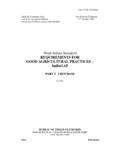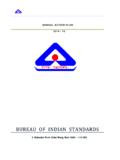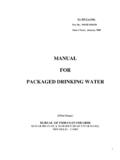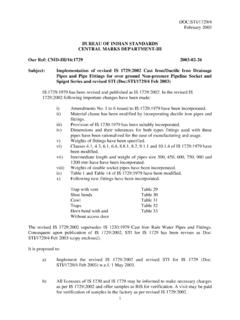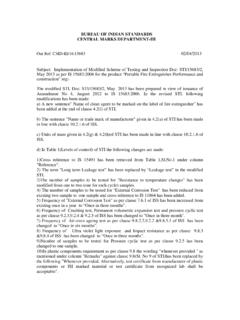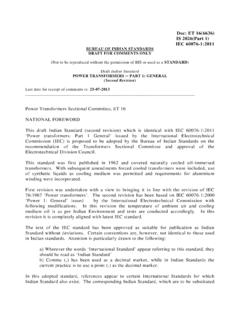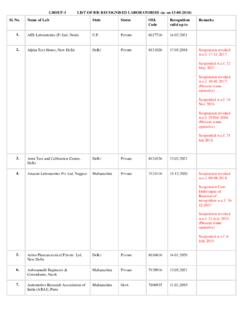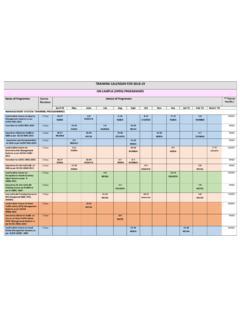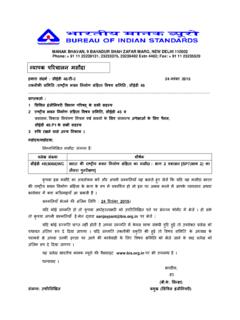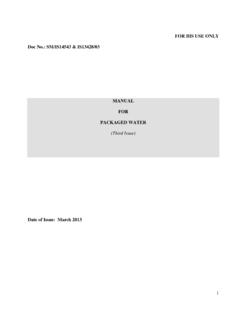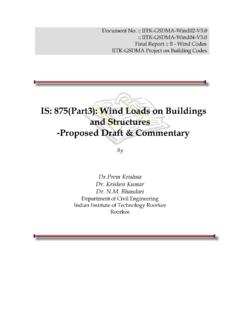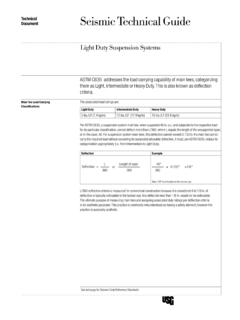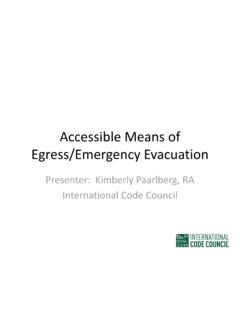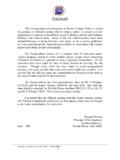Transcription of FOR COMMENTS ONLY DOC: CED 38 (10639) WC - bis.org.in
1 FOR COMMENTS ONLY DOC: CED 38 (10639) WC 1 MANAK BHAVAN, 9 BAHADUR SHAH ZAFAR MARG, NEW DELHI 110002 : 38/ -13 24 08 2016 : , 38 : 1 2 38 3 ( ), : 38 (10639) WC ICS 31-10-2016. or ) , 0 ( ( ( ) : FOR COMMENTS ONLY DOC: CED 38 (10639) WC 2 MANAK BHAVAN, 9 BAHADUR SHAH ZAFAR MARG, NEW DELHI 110002 DOCUMENT DESPATCH ADVICE TECHNICAL COMMITTEE.)
2 Special Structures Sectional Committee, CED 38 ADDRESSED TO: 1. All Members of Civil Engineering Division Council, CEDC; 2. All Members of CED 38; 3. All others interested. Dear Sir (s), Please find enclosed the following documents: Doc No. Title CED 38 (10639) WC CRITERIA FOR STRUCTURAL SAFETY OF TALL BUILDINGS, ICS Kindly examine the draft and forward your views stating any difficulties which you are likely to experience in your business or profession, if this is finally adopted as National Standards Last Date for COMMENTS : 31 October 2016. COMMENTS if any, may please be made in the format as given overleaf and mailed to the undersigned at and In case no COMMENTS are received or COMMENTS received are of editorial nature, you will kindly permit us to presume your approval for the above document as finalized. However, in case COMMENTS of technical in nature are received then it may be finalized either in consultation with the Chairman, Sectional Committee or referred to the Sectional Committee for further necessary action if so desired by the Chairman, Sectional Committee.
3 The documents are also hosted on BIS website Thanking you, Yours faithfully, sd/- (B K Sinha) Head (Civil Engg.) Encl: as above DRAFTS IN WIDE CIRCULATION Reference Date CED 38/T- 13 24 08 2016 FOR COMMENTS ONLY DOC: CED 38 (10639) WC 3 FORMAT FOR SENDING COMMENTS ON THE DOCUMENT [Please use A4 size sheet of paper only and type within fields indicated. COMMENTS on each clause/sub-clause/ table/figure, etc, be stated on a fresh row. Information/ COMMENTS should include reasons for COMMENTS , technical references and suggestions for modified wordings of the clause. COMMENTS through e-mail to and shall be appreciated.]
4 ] Doc. No.: CED 38 (10639) WC BIS Letter Ref: CED 38/T-13 Dated: 24 August 2016 Title: Draft for CRITERIA FOR STRUCTURAL SAFETY OF TALL BUILDINGS Name of the Commentator/ Organization: _____ Clause/ Para/ Table/ Figure No. commented COMMENTS /Modified Wordings Justification of Proposed Change FOR COMMENTS ONLY DOC: CED 38 (10639)WC 1 BUREAU OF INDIAN STANDARDS Special Structure Sectional Committee, CED 38 Last Date for COMMENTS : 31 October 2016 Draft Indian Standard CRITERIA FOR STRUCTURAL SAFETY OF TALL BUILDINGS ICS FOREWORD Formal Clauses to be added later. IS 456 has provisions for design of plain and reinforced concrete. IS 1893 lays down provisions for estimating the earthquake hazard and effects to be considered in earthquake design of buildings, and IS 875 helps estimate the load effects on structures due to effects other than earthquakes. IS 13920 lays down provisions for design and detailing of reinforced concrete structures to resist earthquake effects.
5 But, there is no code in the country to address comprehensively the special issues associated with the design of Tall Buildings, whose design is governed not just by structural safety aspects, but by serviceability aspects, especially under wind effects. This standard provides prescriptive requirements for design of Tall Buildings made of reinforced concrete buildings. The following are the salient issues addressed in this prescriptive approach adopted by this standard: (1) Structural Systems that can be adopted; (2) General requirements including (a) height limitations of different structural systems, (b) elevation and plan aspect ratios, (c) lateral drift, (d) storey stiffness and strength, (e) modes of vibration, (f) floor systems, (g) materials, and (h) progressive collapse mechanisms; (3) Wind and Seismic Effects: (a) load combinations, and (b) acceptable serviceability criteria for lateral accelerations; (4) Methods of structural analysis to be adopted, and section properties (in cracked and uncracked states) of reinforced concrete member to be considered in analysis; (5) Aspects of structural design for various structural systems; (6) Issues to be considered in design of foundations; and (7) Systems needed for structural health monitoring.
6 Buildings that do not follow the requirements of this standard ( , buildings with heights exceeding the limits specified in this code, buildings whose height exceeds the maximum suitable height specified for a particular structural system, or use of any other (irregular) lateral load resisting structural system), and those buildings that are not covered by this standard, shall be deemed to be Code-Exceeding Tall Buildings. Such Code-Exceeding Tall Buildings shall require a Performance-based Design Approach, to demonstrate that the performance of the building meets at least that intended by the prescriptive design code provisions laid down in this standard. For such Code-Exceeding Tall Buildings, Annex A provides design and approval processes. The Sectional Committee responsible for the preparation of this standard has taken into consideration the views of manufacturers, users, engineers, architects, builders and technologists, and has related the standard to the practices followed in the country in this field.
7 Also, due consideration has been given to the coordination of this standard with those international standards prevailing in different regions of the world. In the preparation of this standard, assistance has been derived from the following publications: FOR COMMENTS ONLY DOC: CED 38 (10639) WC 2 1. , (2008), Guide for Modeling and Calculating Shrinkage and Creep in Hardened Concrete, American Concrete Institute, USA for estimating creep and shrinkage effects; For the purpose of deciding whether a particular requirement of this standard is complied with, the final value, observed or calculated, expressing the result of a test or analysis, shall be rounded off in accordance with IS 2:1960 Rules for rounding off numerical values (Revised) . The number of significant places retained in the rounded off value should be same as that of the specified value in this standard. FOR COMMENTS ONLY DOC: CED 38 (10639) WC 3 BUREAU OF INDIAN STANDARDS Special Structure Sectional Committee, CED 29 Last Date for COMMENTS : 31 October 2016 Draft Indian Standard CRITERIA FOR STRUCTURAL SAFETY OF TALL BUILDINGS ICS 1 SCOPE This code is applicable for reinforced concrete (RC) buildings of heights greater than 45 m, but less than 250 m, normally intended for use as residential, office and other commercial buildings.
8 This code is not applicable for tall buildings located in the near-field of seismogenic faults. For the purposes of this code, near-field is taken as 10 km (shortest distance) from a seismogenic fault. For buildings located within 10 km (shortest distance) of seismogenic faults, more rigorous approach is needed to proportion, analyze, design, detail and construct such buildings. The prescriptive requirements mentioned in this standard shall be used for proportioning such buildings, but more stringent specifications may be specified by the Client Owner of the building or by the Tall Building Committee appointed by the local authority administering the building project. This code may be used for design of medium- and low-rise buildings (of heights equal to or less than 45m) also; the good practices mentioned in this standard will add value to the design of the said buildings. On the other hand, this code is not applicable for design of buildings of heights more than 250 m.
9 This standard is a prescriptive code covering design aspects of tall buildings. These aspects include: (a) Selection of appropriate structural system; (b) Geometric proportioning of the building; (c) Integrity of Structural System; (d) Resistance to Wind and Earthquake effects; and (e) Other special considerations related to high-rise buildings. This code is applicable only for buildings that house 20,000 or fewer persons. This standard addresses the following typical structural systems of Tall Buildings: a) Structural Wall Systems; b) Moment Frame Systems; c) Moment Frame Structural Wall Systems; d) Structural Wall Flat Slab Floor Systems with perimeter Moment Frame; e) Structural Wall Tube Frame Systems; and f) Any of the above with additional framing systems, , Outrigger Trusses, Belt Trusses and Braced Frames. This code shall be read along with all Indian Standards relevant to design and construction of buildings and structures.
10 In case of conflict, clauses given in this code shall govern. FOR COMMENTS ONLY DOC: CED 38 (10639) WC 4 For buildings that do not conform to the prescriptive requirements of this code, a more rigorous procedure is necessary for design and review. The general procedure to be adopted is given in Annex A to proportion, analyze, design, detail, gain approval and construct such buildings. Performance objectives or procedures more stringent than those specified in Annex A may be specified by the Client/ Owner of the building or by the Tall Building Committee appointed by the local authority administering the building project. 2 REFERENCES The following standards contain provisions which, through reference in this text, constitute provisions of this standard. At the time of publication, the editions indicated were valid. All standards are subject to revision, and parties to agreements based on this standard are encouraged to investigate the possibility of applying the most recent editions of the standards indicated below: Part 1 : 1987 Dead Loads Unit weights of building material and stored materials (Second Revision) Part 2 : 1987 Imposed Loads (Second Revision) Part 3 : 2015 Wind Loads (Third Revision) Part 4 : 1987 Snow Loads (Second Revision) Part 5 : 1987 Special Loads and Load Combinations (Second Revision) 1343 : 2012 Code of Practice for Prestressed Concrete (Second Revision) 1893 Criteria For Earthquake Resistant Design of Structures Part 1 : 2016 General Provisions and Buildings (Sixth Revision) Part 2 : 2014 Liquid Retaining Tanks Elevated and ground supported Part 4 : 2015 Industrial Structures including Stack-Like Structures (First Revision) 4326.
